Egor Chistov
Can No-Reference Quality-Assessment Methods Serve as Perceptual Losses for Super-Resolution?
May 30, 2024Abstract:Perceptual losses play an important role in constructing deep-neural-network-based methods by increasing the naturalness and realism of processed images and videos. Use of perceptual losses is often limited to LPIPS, a fullreference method. Even though deep no-reference image-qualityassessment methods are excellent at predicting human judgment, little research has examined their incorporation in loss functions. This paper investigates direct optimization of several video-superresolution models using no-reference image-quality-assessment methods as perceptual losses. Our experimental results show that straightforward optimization of these methods produce artifacts, but a special training procedure can mitigate them.
BASED: Benchmarking, Analysis, and Structural Estimation of Deblurring
May 27, 2023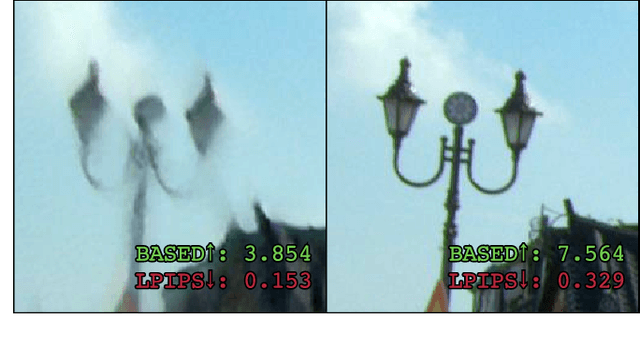
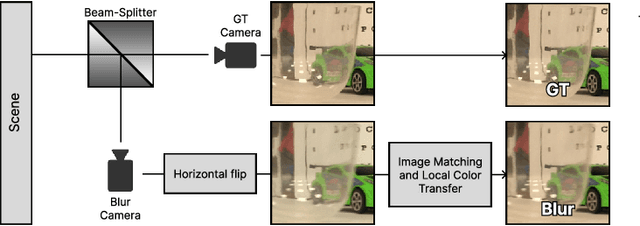
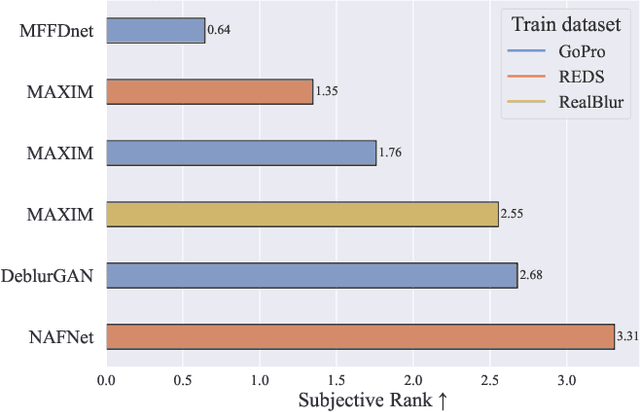
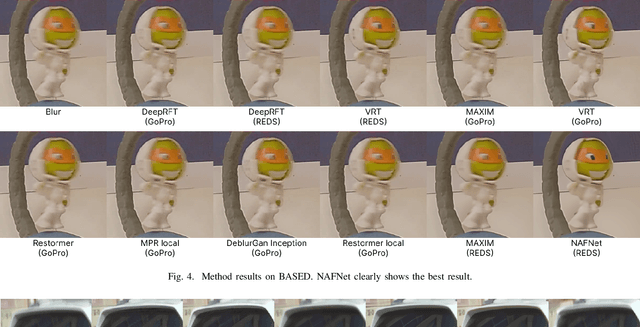
Abstract:This paper discusses the challenges of evaluating deblurring-methods quality and proposes a reduced-reference metric based on machine learning. Traditional quality-assessment metrics such as PSNR and SSIM are common for this task, but not only do they correlate poorly with subjective assessments, they also require ground-truth (GT) frames, which can be difficult to obtain in the case of deblurring. To develop and evaluate our metric, we created a new motion-blur dataset using a beam splitter. The setup captured various motion types using a static camera, as most scenes in existing datasets include blur due to camera motion. We also conducted two large subjective comparisons to aid in metric development. Our resulting metric requires no GT frames, and it correlates well with subjective human perception of blur.
Color Mismatches in Stereoscopic Video: Real-World Dataset and Deep Correction Method
Mar 12, 2023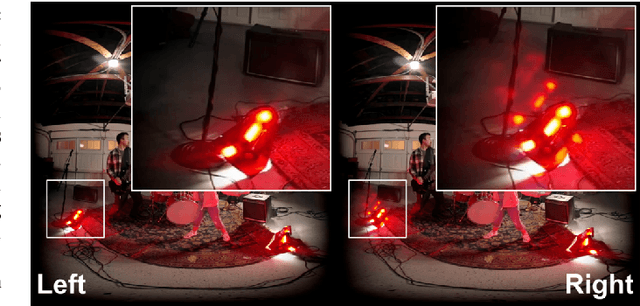
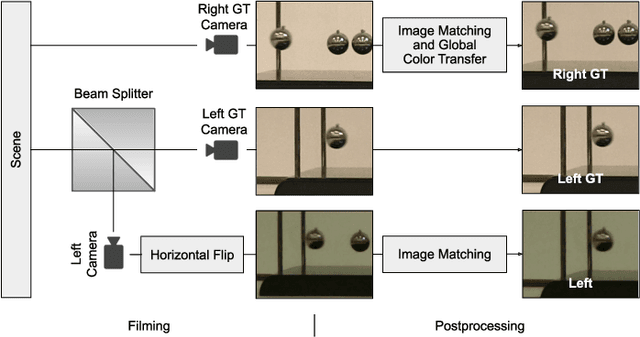


Abstract:We propose a real-world dataset of stereoscopic videos for color-mismatch correction. It includes real-world distortions achieved using a beam splitter. Our dataset is larger than any other for this task. We compared eight color-mismatch-correction methods on artificial and real-world datasets and showed that local methods are best suited to artificial distortions and that global methods are best suited to real-world distortions. Our efforts improved on the latest local neural-network method for color-mismatch correction in stereoscopic images, making it work faster and better on both artificial and real-world distortions.
 Add to Chrome
Add to Chrome Add to Firefox
Add to Firefox Add to Edge
Add to Edge